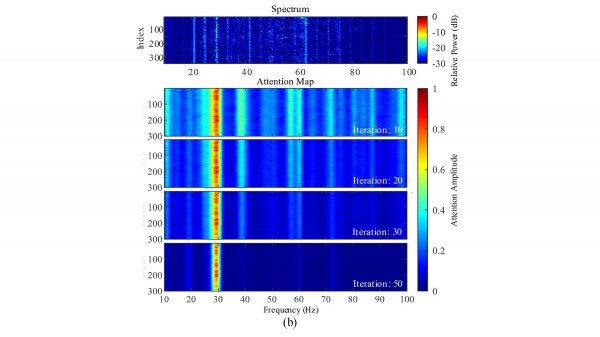Attention-based deep neural network increases detection capability in sonar systems
In underwater acoustics, deep learning is gaining traction in improving sonar systems to detect ships and submarines in distress or in restricted waters. However, noise interference from the complex marine environment becomes a challenge when attempting to detect targeted ship-radiated sounds.
In the JASA Express Letters, researchers in China and the United States explore an attention-based deep neural network (ABNN) to tackle this problem.
“We found the ABNN was highly accurate in target recognition, exceeding a conventional deep neural network, particularly when using limited single-target data to detect multiple targets,” co-author Qunyan Ren said.
Deep learning is a machine-learning method that uses artificial neural networks inspired by the human brain to recognize patterns. Each layer of artificial neurons, or nodes, learns a distinct set of features based on the information contained in the previous layer.
ABNN uses an attention module to mimic elements in the cognitive process that enable us to focus on the most important parts of an image, language, or other pattern and tune out the rest. This is accomplished by adding more weight to certain nodes to enhance specific pattern elements in the machine-learning process.
Incorporating an ABNN system in sonar equipment for targeted ship detection, the researchers tested two ships in a shallow, 135-square-mile area of the South China Sea. They compared their results with a typical deep neural network (DNN). Radar and other equipment were used to determine more than 17 interfering vessels in the experimental area.
They found the ABNN increases its predictions considerably as it gravitates toward the features closely correlated with the training goals. Detection becomes more pronounced as the network continually cycles through the entire training dataset, accentuating the weighted nodes and disregarding irrelevant information.
While the ABNN accuracy of detecting ships A and B separately was slightly higher than the DNN (98% and 97.4%, respectively), the ABNN accuracy of detecting both ships in the same vicinity was significantly higher (74% and 58.4%).
For multiple-target identification, a traditional ABNN model is generally trained using multiship data, but this can be a complicated and computationally costly process. The researchers trained their ABNN model to detect each target separately. The individual-target datasets then merge as the output layer of the network is extended.
“The need to detect multiple ships at one time is a common scenario, and our model significantly exceeds DNN in detecting two ships in the same vicinity,” Ren said. “Moreover, our ABNN focused on the inherent features of the two ships simultaneously.”
Developing an AI that ‘thinks’ like humans
Xu Xiao et al, Underwater acoustic target recognition using attention-based deep neural network, JASA Express Letters (2021). doi.org/10.1121/10.0006299
Citation:
Attention-based deep neural network increases detection capability in sonar systems (2021, October 12)
retrieved 12 October 2021
from https://techxplore.com/news/2021-10-attention-based-deep-neural-network-capability.html
This document is subject to copyright. Apart from any fair dealing for the purpose of private study or research, no
part may be reproduced without the written permission. The content is provided for information purposes only.
For all the latest Technology News Click Here
For the latest news and updates, follow us on Google News.

